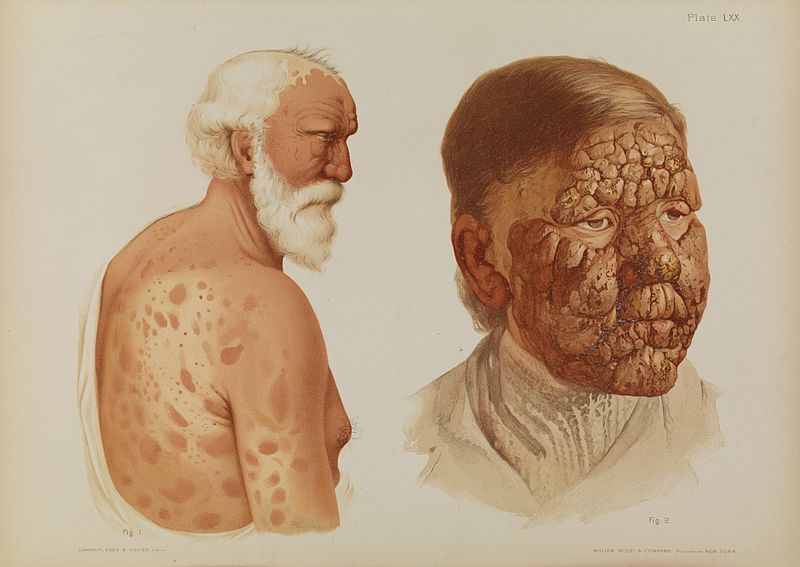Leprosy is a chronic infectious disease that affects the skin, peripheral nerves, mucous membranes, and upper respiratory tract. The bacteria – “Mycobacterium leprae” causes leprosy. It can be transmitted through droplets from the nose and mouth of an infected person or through contact with infected tissue or bodily fluids. There were 127,558 new leprosy cases detected globally in 2020, according to official figures from 139 countries from the 6 WHO Regions.

Types of Leprosy
There are three types of leprosy: tuberculoid leprosy, lepromatous leprosy, and borderline leprosy.
Tuberculoid leprosy is the most common type of disease. It is characterized by a lack of nerve damage and skin lesions that are not as severe as other types of the disease. The course of the disease includes a latent period and then a reactivation period. The reactivation period is characterized by worsening skin lesions, ulceration, disfigurement, and enlargement of lymph nodes (lymphadenitis) (any common term to this?).
Lepromatous leprosy is characterized by severe nerve damage and skin lesions that can be seen from a distance. It is caused by Mycobacterium leprae. Patients with this disease typically have a small number of large nerves in the skin. In comparison, tuberculoid leprosy causes fewer symptoms that are not as obvious to observers.
Borderline leprosy is distinguished by well-defined hypochromic plaques with noticeable central skin sparing. Papules, plaques, macules, or nodules are common skin findings, and the lesions are sometimes described as having a “Swiss cheese” appearance.
Symptoms

The symptoms of leprosy are not always visible at first. They may take up to two years to appear after infection. The most common symptom is a skin lesion that looks like a red patch with raised edges and may have scales. These lesions are painful and may itch. They can be found anywhere on the skin.
Some people develop nerve damage that makes it difficult to move muscles, their voice may change, and they often lose sensation in their extremities. Other symptoms of leprosy include eyebrows that grow together, hair loss, eyelid sores, bone destruction, and loss of teeth. Mild cases usually require no treatment, but those with more severe or chronic infections are often treated with an antibiotic called dapsone, which prevents bacteria growth. Anal irritation may be relieved with topical creams or an enema.
Treatments
The treatment for leprosy is multidrug therapy (MDT). MDT consists of a combination of three or more drugs to treat the infection. The drugs are dapsone, rifampicin and clofazimine. These drugs are combined because they work better than when given alone. The first drug in MDT is dapsone which kills the bacteria that cause leprosy. Rifampicin helps to kill any remaining bacteria, and clofazimine helps to prevent new infections from developing. This treatment can be given for up to 12 months which usually cures the disease. If a person does not respond well to this treatment, surgery may be required to remove infected tissue from the spine or limbs.
References:
Donohue, M. (2019, June 11). Leprosy: Symptoms, pictures, types, and treatment. Healthline from https://www.healthline.com/health/leprosy
Leprosy. Leprosy – an overview | ScienceDirect Topics. (n.d.). from https://www.sciencedirect.com/topics/medicine-and-dentistry/leprosy
World Health Organization. (n.d.). Leprosy. World Health Organization from https://www.who.int/news-room/fact-sheets/detail/leprosy
World Health Organization. (n.d.). Treatment. World Health Organization from https://www.who.int/teams/control-of-neglected-tropical-diseases/leprosy/treatment


